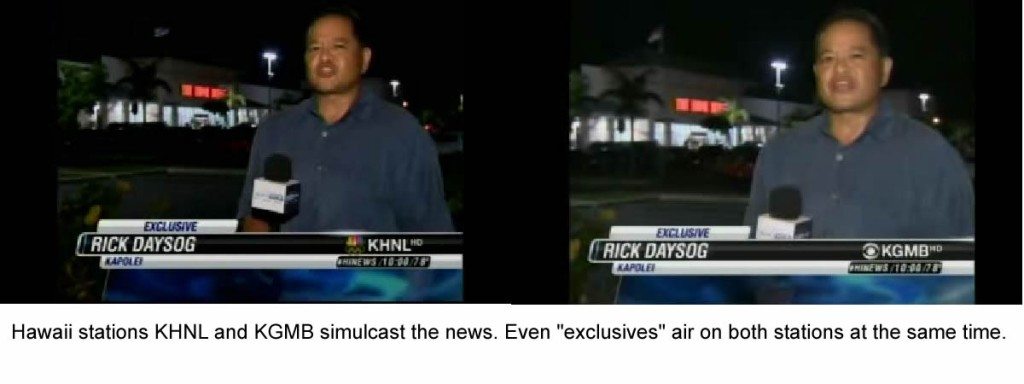 Riddle me this: If big TV station groups keep getting bigger, what happens to local news? It’s a question I tried to answer, in part, in this year’s State of the News Media report. Over the years, as stations have been bought and sold and joint operating deals have been cut, fewer and stations have originated local news content. At the time our report was published, a quarter of the U.S. television stations that aired local newscasts did not produce the programs themselves. And new research indicates the trend has continued.
Riddle me this: If big TV station groups keep getting bigger, what happens to local news? It’s a question I tried to answer, in part, in this year’s State of the News Media report. Over the years, as stations have been bought and sold and joint operating deals have been cut, fewer and stations have originated local news content. At the time our report was published, a quarter of the U.S. television stations that aired local newscasts did not produce the programs themselves. And new research indicates the trend has continued.
According to the latest survey of news directors conducted by Bob Papper for RTDNA, 30 percent of TV stations across the country that air local news get their newscasts from some other station, usually in the same market. Almost a third. Many of the “carrying” stations are Fox or CW or MyNetworkTV affiliates, which never aired their own newscasts. In other words, consolidation hasn’t necessarily led to the elimination of lots of newsrooms. But it has affected what viewers see.
When I looked at these arrangements, I found everything from stations that simulcast news programs, like KHNL and KGMB in Hawaii, to stations with joint newsrooms but separate anchor teams. In plenty of cases, however, the content was basically the same on both stations. Same anchors, same reporters, same stories, often in the same order.
As I wrote in the Pew report, “These arrangements do give viewers a new option—the chance to watch local news at different times on different channels.” But in many cases, they don’t give viewers anything substantially different to watch. As one critic told me, convenience isn’t choice.
The FCC is now paying attention. Under new chair Tom Wheeler, the commission voted this spring to limit shared services agreements. The NAB is suing to block the rule. It’s complicated and it’s going to take a long time to sort out.








